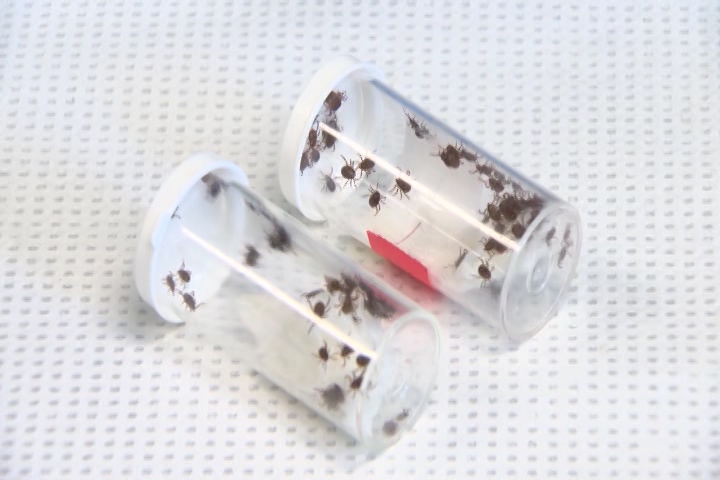You may not want to hear it, but tick season is upon us. According to the Leeds, Grenville and Lanark District Health Unit, ticks become active when the temperature rises above 4 degrees Celsius. The tiny bugs live in tall grass and wooded areas and love to attach themselves to dogs, cats and humans.

If bitten by a tick you may be at risk of getting Lyme disease. The health unit says not all ticks carry the bacteria that cause Lyme disease — transmission depends on the length of time the infected tick is attached.
Ticks that are removed quickly and have been attached for less than 24 hours are not likely to transfer the bacteria. However, if the tick has been attached for longer than 24 hours risk of infection is increased, and it is recommended to consult your health care provider. The health unit added, if you find a tick on your body check to see if it is flat or fat. A fat tick is an indication that it has been feeding for a longer period of time, another detail that should be shared with your healthcare provider.
Lyme disease symptoms can range from a bulls-eye rash around the bite area, to headache, fever and muscle or joint pain. Symptoms can appear after three days to several weeks following a tick bite. It is recommended that you consult your health care provider as soon as you experience any of these symptoms.
- Honda expected to announce Ontario EV battery plant, part of a $15B investment
- Trudeau says ‘good luck’ to Saskatchewan premier in carbon price spat
- Canadians more likely to eat food past best-before date. What are the risks?
- Hundreds mourn 16-year-old Halifax homicide victim: ‘The youth are feeling it’
While not all ticks carry the bacteria, it is important to dress appropriately when in wooded areas and check yourself over before returning inside. Here are some precautionary tips from the Leeds, Grenville and Lanark District Health Unit to help reduce your risk of being bit:
• Dressing in light coloured clothing makes adult ticks and nymphs (small stage of the tick), easier to see when they are on you as they are darker in colour.
• Always remember to do a tick check when you or your children return inside.
• Thoroughly check your body for ticks and nymphs and promptly remove and dispose of them. If possible have someone check you from behind.
• You can take a quick shower to help remove any unattached ticks.
• Putting your clothes in a hot dryer for several minutes has been found to kill ticks.
• Be aware that your pets can bring ticks into your home.
For more information about ticks and Lyme disease visit the Leeds, Grenville and Lanark District Health Unit.




Comments